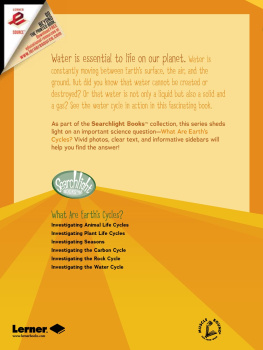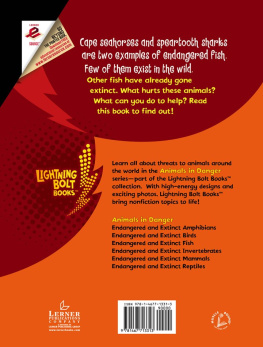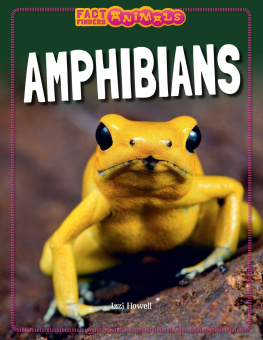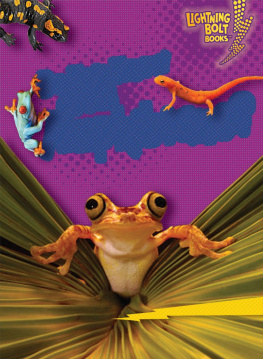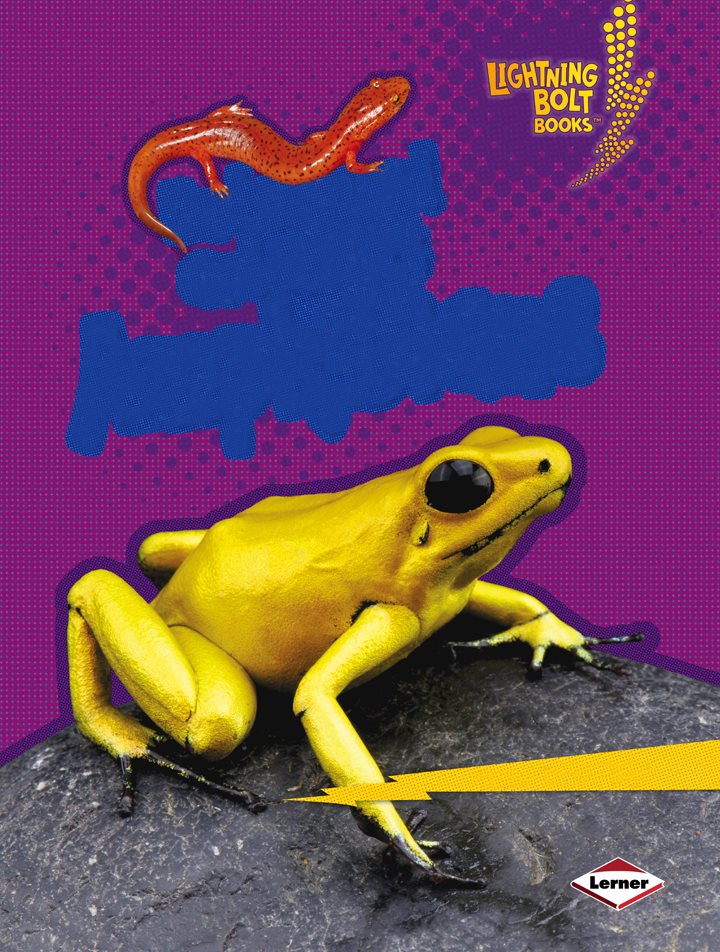Endangered
and Extinct
Amphibians
Candice Ransom
To Wyatt,
Tate, and Abe
- Candice
Copyright 2014 by Lerner Publishing Group, Inc.
All rights reserved. International copyright secured. No part of this book may be reproduced,
stored in a retrieval system, or transmitted in any form or by any meanselectronic, mechanical,
photocopying, recording, or otherwisewithout the prior written permission of Lerner Publishing
Group, Inc., except for the inclusion of brief quotations in an acknowledged review.
Lerner Publications Company
A division of Lerner Publishing Group, Inc.
241 First Avenue North
Minneapolis, MN 55401 U.S.A.
Website address: www.lernerbooks.com
Library of Congress Cataloging-in-Publication Data
Ransom, Candice F., 1952
Endangered and extinct amphibians / by Candice Ransom.
pages cm. (Lightning bolt booksAnimals in danger)
Includes index.
ISBN 9781467713320 (lib. bdg. : alk. paper)
ISBN 9781467724920 (eBook)
1. Extinct amphibiansJuvenile literature. 2. Endangered speciesJuvenile literature. I. Title.
QL644.8.R36 2014
597.816'8dc23
201301808
Manufactured in the United States of America
1 PC 12/31/13
Table of Contents
Helping Endangered
Amphibians
What You
Can Do
A Remarkable
Recovery
Amphibians
What are amphibians?
They are animals that
have two lives.
They start
life in water. Most adult
amphibians live on land.
This young amphibian
will grow into an adult
that lives on land.
Frogs and toads lay eggs in
streams, rivers, and even puddles.
The eggs hatch into tadpoles.
Tadpoles are born with long tails
and gills. Gills help tadpoles
breathe water just as fish do.
Do you see this
tadpoles gills?
Soon the tadpoles grow legs.
Their tails get smaller until
they are gone. Lungs develop
inside their bodies.
Now the
tadpoles can breathe air.
The young frog or toad begins
life on land.
Salamanders and newts are
amphibians too. They are
different from frogs and toads.
These amphibians keep their tails.
This creature is
a newt.
All amphibians have smooth,
moist skin. Damp skin gives
them extra air to breathe.
Endangered
Amphibians
More than seven thousand
kinds of amphibians hop,
crawl, or swim on Earth.
But many are disappearing.
This spring salamander
is one of many amazing
amphibians. But some
amphibians are in danger.
This Hewitts ghost frog
is endangered .
That means its at risk
of dying out.
Hewitts ghost
frogs have
sideways pupils.
The Hewitts ghost frog lives in
South Africa. You can find it near
fast -flowing mountain streams. It
grips wet rocks with its flat toes.
The endangered arroyo toad
lives in California. It digs a
burrow during the day.
At night, it comes out to
feed on ants
and flies.
The female arroyo toad lays
strings of eggs.
Sometimes
the egg strings can reach
feet (7.3 meters).
Toad eggs are very
tiny. These are
American toad eggs.
This endangered Chinese giant
salamander is the biggest
salamander in the world. It
lives in China and can grow
feet (1.8 m) long.
The Chinese giant salamander
has tiny eyes. But it can feel
fish moving in the water. It
catches fish when it feels
them moving.
This purple frog does not
look much like a frog.
But it is one! It doesnt live
aboveground as most frogs do.
It stays underground and eats
termites.
Purple frogs are
endangered.
The golden poison dart frog
lives in South America.
Its skin
contains a strong poison.
Look at the frogs greenish -gold
color. Predators see its
bright color and
stay away.
The poison in this frogs skin
can kill ten people! The
poison helps this endangered
creature stay alive.
Extinct
Amphibians
Can you imagine a frog as
big as a beach ball? The
devil frog was inches (41
centimeters) long and weighed
pounds (4.5 kilograms)!
The devil frog is
extinct . That means
it has died out.
The devil frog lived to
million years ago. It may
have eaten small dinosaurs.
The devil frog may
have gobbled up small
dinos, such as this one.
Thisorange-belliednewtlivedinChina.
ItswaminthewatersofKunmingLake.


